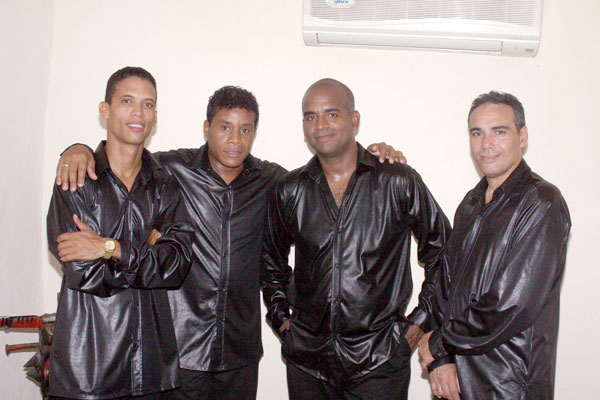12.11.1 The New Sapphires

In 1987, Eduardo Elio Hernández (El Chino), a former member of Los Zafiros (a group that disbanded in 1975), restructured the vocal group with four new voices with the help of musician Mariano Suárez del Villar. After several auditions, Jorge Echevarría, Enrique Calderín Rivero, Alberto Caballero, and guitarist Amado Martínez were accepted.
These musicians were mentored by Manuel Galván (a former member of Los Zafiros); the public favored them with great expectation and enthusiasm, and they began to be called Los Nuevos Zafiros (The New Zafiros). They made their debut in June 1987 with the Aragón Orchestra at Radio Progreso (Calzada de Infanta No. 105, Vedado, Plaza de la Revolución, Havana). El Chino managed to stay with them for three years, but, plagued by his evident alcoholism and other illnesses, he lived in retirement until his death on August 8, 1995.
The group returned in 1991. They began performing several times at the Red Room of the Capri Hotel (21st Street between North and West, Vedado, Plaza de la Revolución, Havana) and at nightclubs in Playas del Este. They later participated in the Boleros de Oro Festival.
Their first album was released on the labels Magic Music and Artex in 1995. That same year, they traveled to Sweden and toured more than a dozen cities in Spain, including Madrid, in 1997. They performed their music in twenty-seven European cities in 1998.
These new members face the challenge of the first Zafiros. Their director, Jorge Echevarría Durañona, once said: “We pay tribute to the great Zafiros. We greatly respect the legend of a vocal group that filled a chapter in the music of the sixties, which continues to be loved and has not been able to surpass.”
Years later, in 1998, Los Zafiros returned to the spotlight with the successful release of the CD “Bossa Cubana” on World Circuit Records; and they achieved another surge in popularity with the biographical film “Zafiros, locura azul,” directed by Manuel Herrera.
In 2010, the members of the new Zafiros are: Jorge Echevarría Durañona, director and backing vocalist; Raymond Espinosa Lapeira, tenorino; Karel Dorado Bartuti, backing vocalist; Amed Nodarse Vicet, falsetto; and José Tomás Díaz Núñez, electric guitar. They are currently working on their next album, “Zafiros, mucho más,” released on the Cuban label Bis Music.
The new Zafiros continue to be acclaimed and fill theaters throughout Cuba and are frequently requested in several European cities.








